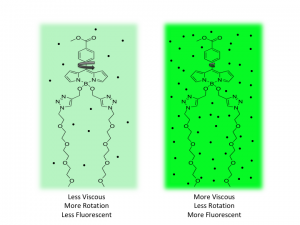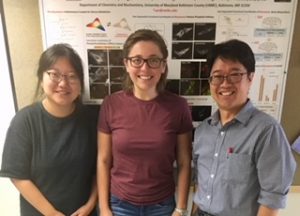The goal of my research is to develop a fluorescent agent that localizes in the cytoplasm of cells to visualize intracellular viscosity, which in turn can be used to identify protein-protein interactions in cells. When enzymes cluster, it forms a more viscous environment, so a method for visualizing viscosity will allow us to develop our understanding of mechanisms in biological pathways. In order to do this, we are synthesizing a fluorescent molecular rotor.

In less viscous environments, there will be more rotation, so more energy will be lost to non-radiative internal conversions. Less photons will be released and the compound will be less fluorescent. In more viscous environments, the media will inhibit rotation. Less energy will be lost to non-radiative internal conversions, so more photons will be released and the compound will be more fluorescent. Therefor, within a single cell, fluorescence will be stronger in areas where proteins are interacting.
